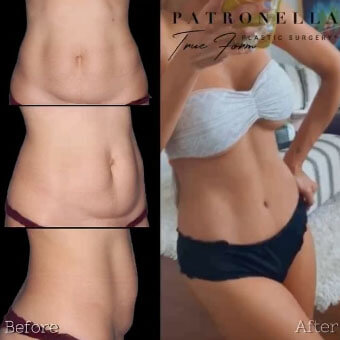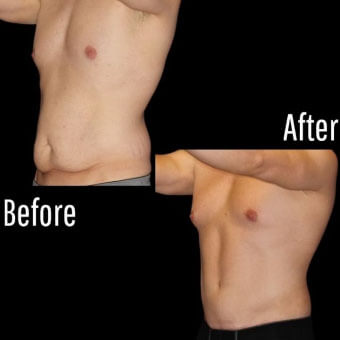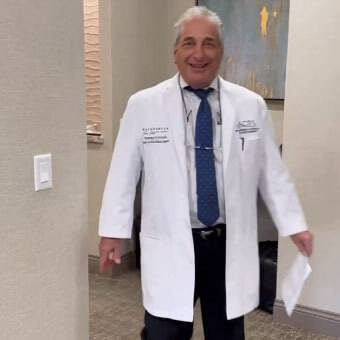Internal Bra Benefits: How Dr. Patronella Uses Mesh for Breast Lifts and Implant Revision Surgery
Posted April 05, 2023 in Breast Augmentation, Breast Lift, Breast Revision, Combined Breast Augmentation and Breast Lift, Mommy Makeover, Uncategorized
By Sherri Roberts
Marketing Director & Virtual Consultation Coordinator for Dr. Patronella
His meticulous approach to creating exceptional results is a top reason Houston plastic surgeon Dr. Chris Patronella is widely considered one of the best plastic surgeons in Houston, Texas. The incorporation of an internal bra to reinforce soft tissues during breast lift and breast implant revision procedures is but one of many examples which reflect his attention to detail.
“As we get older, the strength and thickness of our skin and connective tissue diminishes, resulting in sagging and wrinkles. Often it’s first noticed in the face, but this process is also occurring throughout the body,” said Dr. Patronella. “This loss of elasticity in the deep fibrous tissue of the breasts is the reason recurrent sagging is common after breast lift and breast implant revision procedures,” he added. Studies show this is partially due to a gradual loss of collagen in our bodies—about one percent each year after age 20.
To counteract this, Dr. Patronella fashions an internal bra with GalaFLEX, a material which is similar to that in the absorbable sutures Dr. Patronella employs. The product is absorbed into the body within one to two years and is “very safe,” Dr. Patronella said.
“GalaFLEX serves as a scaffold to stimulate the body to produce collagen support in the weave of the mesh. So when the mesh is fully absorbed by the body, the collagen is still there,” said Dr. Patronella. “This internal bra supports the weight of large breasts or implants and enhances the longevity of the breasts’ perkiness following breast lift surgery.”
For breast implant revision surgery, Dr. Patronella often employs mesh combined with other techniques to repair the implant pocket and improve the position of implants. Some of the most common conditions Dr. Patronella corrects include “bottoming out” where implants fall beneath the breast crease and the “lateral displacement” of implants which have shifted sideways.
Your Breast Surgery Consultation with Dr. Patronella
If you are interested in learning more about an internal bra and if it is a good option for you, we invite you to schedule a consultation with Dr. Patronella. To determine the best strategy for your needs, he will take into consideration your breast appearance preferences along with your current breast shape, size and laxity. This allows him to determine the best combination of factors including an internal bra, implants vs. no implants, implants profile, and breast fat grafting to achieve the results you desire.
Video Transcript Summary
An internal bra is typically placement of mesh, either for support of breast implants or support of the breast tissue during a breast lift procedure. Very commonly in my practice, I see patients who’ve had breast implants in the past, and the implants have either fallen to the side or have fallen too low below the natural position of the breast crease or fold (inframammary fold). The latter circumstance is also known as “bottoming out.” Both of these issues can be repaired during a breast implant revision procedure, and I frequently incorporate mesh to do so. During surgery, mesh is placed inside the breast to both support the implant and reinforce the repair that I’ve performed.
The other circumstance where I might use mesh is for a woman who has sagging of the breasts, and I’m doing a breast lift procedure to elevate the breasts to a more youthful position on the chest. In these cases, mesh aids in supporting the breast tissue and enhancing the longevity of results.
Constructed of a material similar to the absorbable sutures I make during surgical procedures, the mesh is dissolvable and typically lasts one to two years. Some might ask, “Well, why use dissolvable mesh since it’s going to wear out?” The purpose of it is to stimulate the production of collagen, i.e., scar tissue, which grows through the weaves of the mesh so that the mesh is replaced by a supportive structure of your own tissue.
The formation of scars occurs in every person after they’ve had a procedure. The mesh provides an opportunity to control where the scar tissue forms and to do so in a way that supports either the breast tissue, the implants or both.







